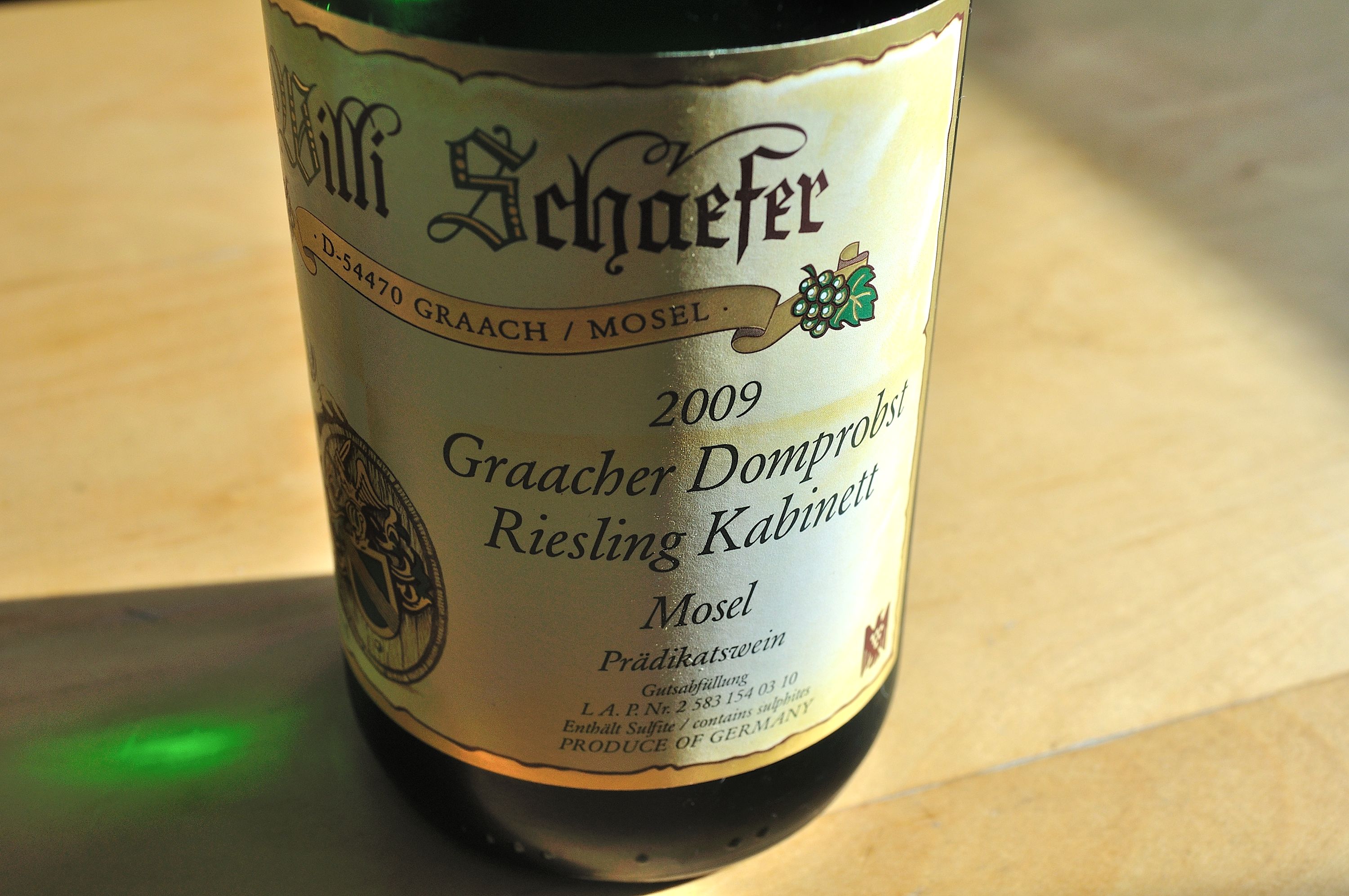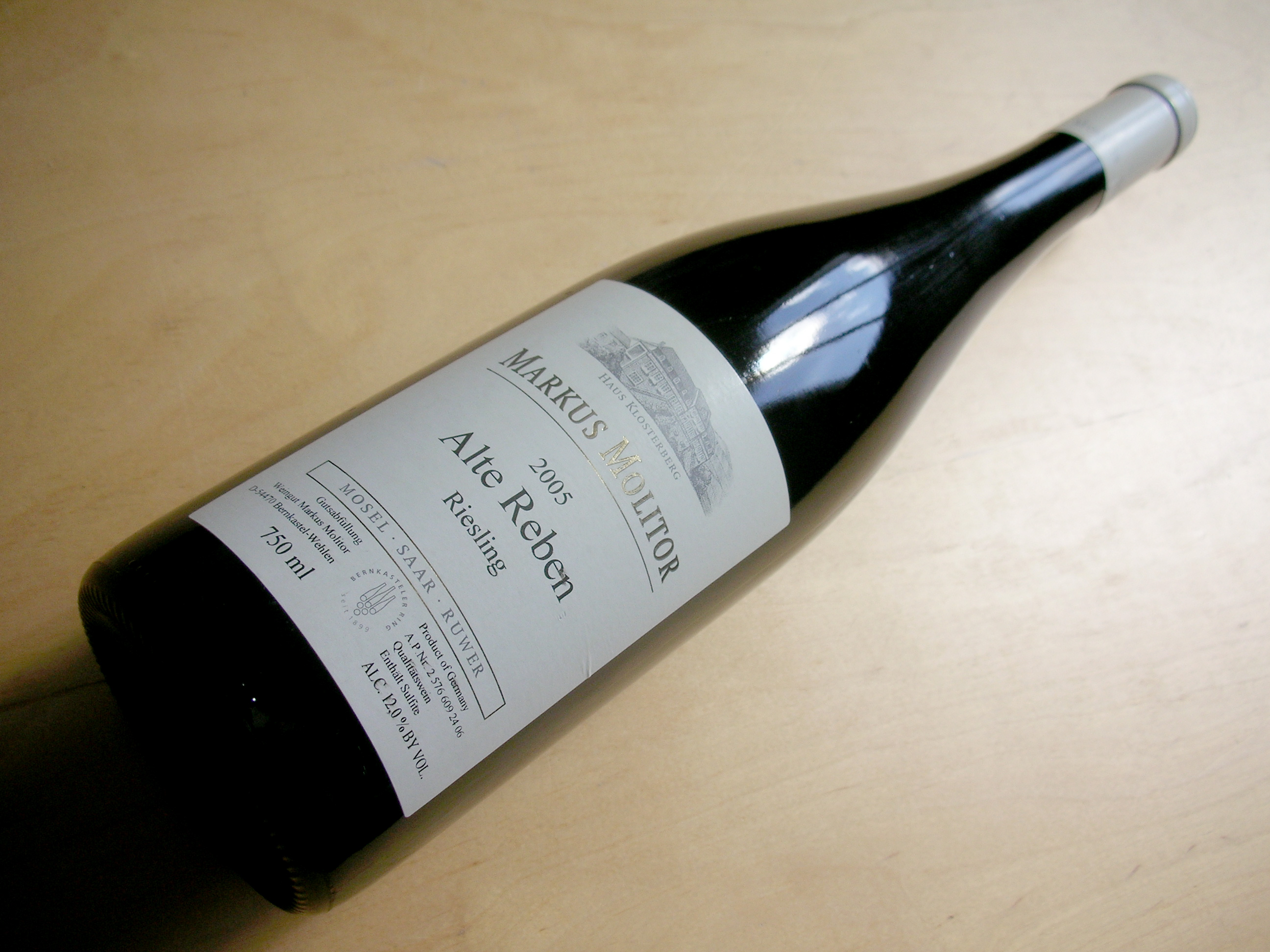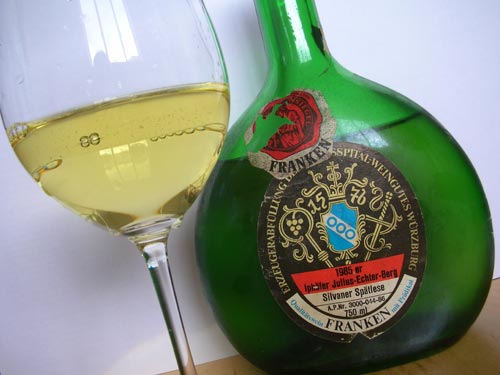Willi Schaefer, Graacher Domprobst, Riesling Kabinett, 2009
Seeing how good their reputation is, it was high time for us to review a wine made at the Willi Schaefer winery. The Schaefer estate is run by Willi and Christoph Schaefer, father and son, who on a few hectares of steep Mosel land exclusively grow Riesling. They feature a label design that just screams traditional Germanic Mosel style, bordering on cute cliché. I like it, of course. The family also seem to be traditional in other ways as they still don't have a website. Or they hide it. There is nothing that needs hiding about this wine though. Not only highly enjoyable on its own it also paired very well with Tim Burton's Sleepy Hollow on a cold autumn night.

It was a cold and windy night. Suffering from a somewhat congested nose, I still desired a glass of wine to keep me company while I watched Christopher Walken decapitate fat blokes in the woods. Just a little light-hearted fun, what could be better than a Mosel Kabinett?









